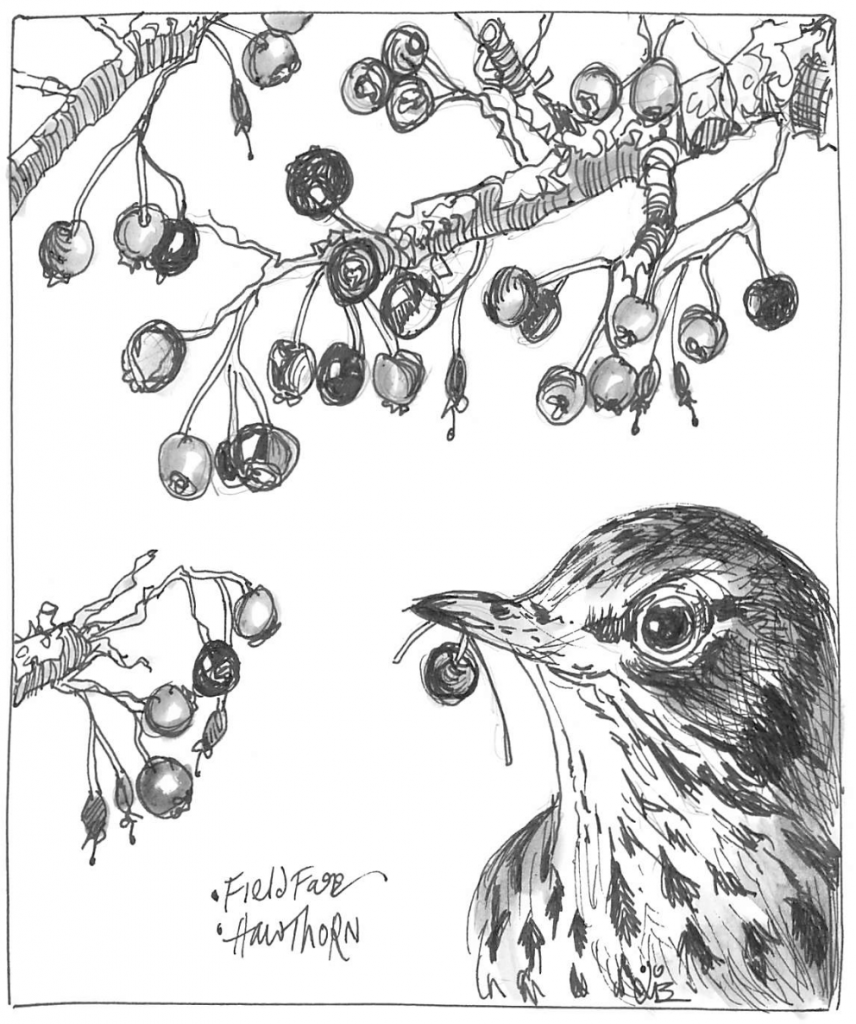
Summer is now officially over and a change in the numbers and species that we can expect to see and hear in the churchyard is underway. Unfortunately, due to other commitments it was impossible to undertake a survey of birds breeding in the area this summer, but I hope to address that next year.
The change that I’m talking about now is, of course, autumn bird migration, a natural phenomenon that occurs as our summer visitors leave for milder climes and winter visitors arrive to escape harsher climates. The Swifts that we’ve enjoyed as they screamed across our skies, along with Swallows and House Martins, Flycatchers and Warblers, have all left. Now we await the arrival of Redwings, Fieldfares and maybe a hunting Short Eared Owl over the pastureland behind the church.
Migration in birds is primarily triggered by changes in daylight, temperature, and food availability. It is a critical aspect of the life cycle for many bird species, allowing them to exploit resources in different geographic areas and avoid harsh environmental conditions.
Migration is a fascinating aspect of ornithology, and it has been proven that birds don’t just follow instincts, but actually navigate their way across continents using the sun, stars, Earth’s magnetic fields and landmarks. They follow established migratory routes which are often influenced by geographic features like coastlines, gaps in mountain ranges, rivers and even motorways.
A lot of migration takes place at night, and it’s worth spending an hour on a still night sitting outside listening for the calls of migrating flocks passing overhead. Learning the flight calls is one way of understanding what is travelling through the night sky. Given Corby Glen’s location, we can especially expect to hear waders, geese, and ducks heading for Rutland Water to overwinter there.
Another phenomenon that has been taking place in many species recently is moult. As the seasons progress feathers can take a real bashing and become damaged and abraded. Particularly primaries (at the wingtip), secondaries (in the centre of the wing) and tertials (nearest the body), collectively known as the remiges – will need to be replaced, even though feathers are composed mainly of avian keratin, which is one of the most durable biological materials on Earth.
If you see a scruffy looking or weird looking bird mooching and skulking around the churchyard, it’s probably a passerine undergoing a post breeding moult. Colour can change the appearance of even common garden birds as new feathers generally look darker than the old ones.
So, what might we expect to see as summer moves into autumn and then winter here at St John’s?
Along with our resident Robin, Starlings, House Sparrows, Woodpigeons and Corvids (Crow, Jackdaw, Rook) look out for those marvellous winter thrushes the Fieldfare and Redwing. Look for them gobbling up red berries or fallen apples. We may be lucky in a year where there is a scarcity of food on the continent to see an irruption of certain species such as Brambling and Waxwing.
Jay, Nuthatch and Sparrowhawk are possible, plus more Blackcaps. Most UK Blackcaps migrate south, a few stay, but the numbers are swelled by birds moving to winter here from Germany and Eastern Europe.
Look out for tit flocks moving through. Mixed flocks of Long Tailed Tit, Blue and Great Tit. Always worth checking as very often there will be a Goldcrest or Marsh Tit in amongst them.
People ask: ‘Yes, but I’ve never seen any of those round here, it’s all conjecture or theory.’ Well, I’ve had a Waxwing flock at Little Humby just down the road and Bramblings on the feeders at Rutland Water. Long tailed tits are common in my garden in Church Street, and last winter I had a Marsh tit on my feeder regularly. Blackcaps and Sparrowhawk are common around the churchyard, and I’ve seen a Goldcrest there twice. If you want to see a Peregrine Falcon pop along to Market Harborough, look up at the broach spire of the church in the centre of the town, and you’ll see two occupying a window ledge on the south side.
That’s the beauty of birdwatching. Anything can turn up anywhere. Enjoy our little patch of avian wonder here in the churchyard at St John’s in Corby Glen. Happy birding!